How to Wire Batteries in Series and Parallel [24 & 36 Volt Trolling Motors]
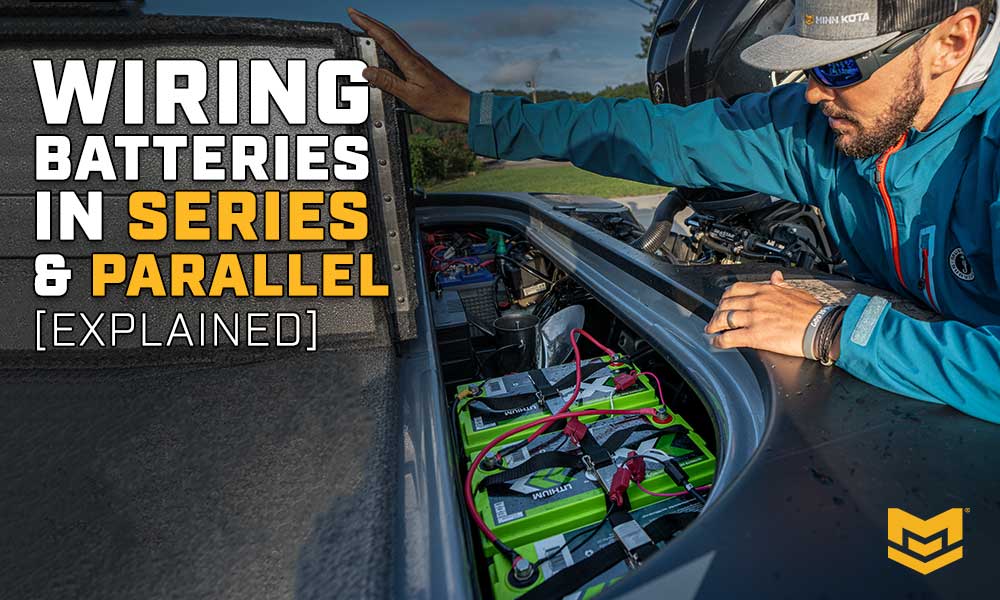
The why, when and how to wire trolling motor batteries in series or parallel
Trolling motors from Minn Kota feature robust 24 and 36 volt systems with enough power to cut through thick vegetation and hold you on spots in heavy wind. For those who do not install trolling motors for a living, one challenge to rigging a new trolling motor can be a complete understanding of how batteries can and should be wired together to create enough power to manage these systems.
We're going to walk you through everything you need to know when it comes to wiring trolling motor batteries.
How to Wire a 12 volt Trolling Motor
The first trolling motor that most anglers are introduced to are 12 volt models in one capacity or another. These relatively simple set-ups make rigging a snap and can be as straightforward as connecting a red (+ Positive) and black (- Negative) wire lead to the respective positive and negative 12 volt marine battery terminal/post or even a Minn Kota Power Center.
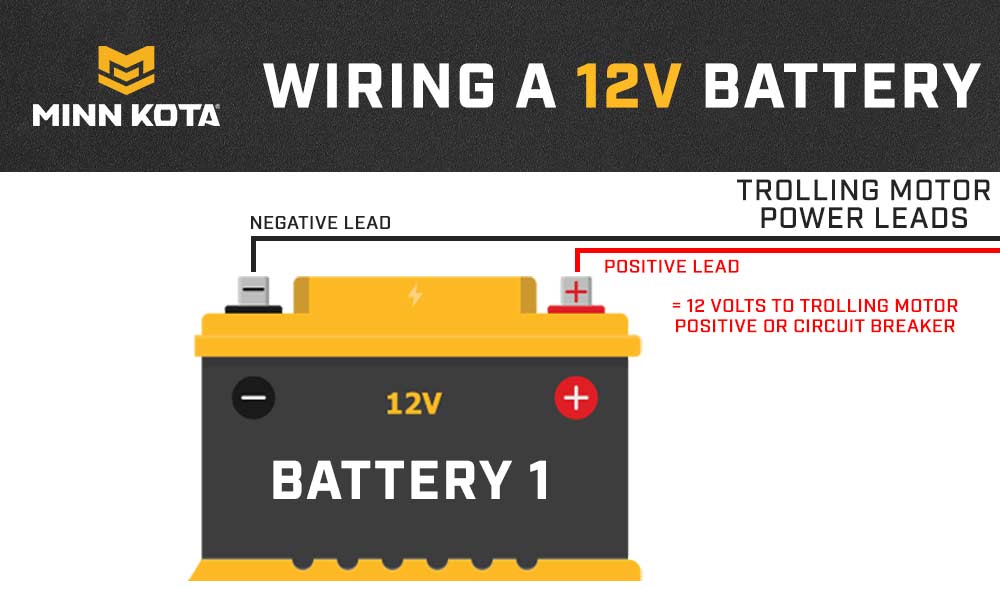
If you connect directly to the battery and not through a Minn Kota Power Center, be sure to use the proper fuse protection or marine breaker whenever wiring any trolling motor or marine electronics.
For more information on choosing the right battery for your trolling motor, check out our Selecting the Best Trolling Motor Battery blog.
How to Get 24 or 36 Volts from 12 Volt Marine Batteries
When stepping up to a more powerful 24 or 36 volt trolling motor, there are a few more steps involved to supply clean, safe power. Rigging batteries in what's known as a series adds together the voltage of the battery. So a 24 volt system will require 2 common 12 volt marine batteries in series (12v x 2 = 24v) and a 36 volt system will require 3 (12v x 3 = 36v).
Before we explain wiring trolling motor batteries in a series, it is important to first understand two concepts, amperage and voltage, and how they're affected by wiring batteries in a series or parallel.
Marine Battery Voltage and Amperage [Explained]
Voltage and Amperage are two electrical measures. Voltage is a measure of force or pressure of electricity, while Amperage is a measure of volume of the current flowing from a power source.
Voltage = the force of electricity
Amperage = Amount of current flow
To draw a comparison, we can think of electricity as a waterfall where voltage is represented by the height of the waterfall, and amperage is the amount of water flowing from the top. The higher the cliff (Voltage) the more energy the water will possess when it reaches the bottom.
Likewise, the amount of water (Amperage) is important because a small amount of water over a great height will still not be as impressive as thousands of gallons from a modest height.
Amp-hours, then, would be the total amount of water in the lake at the top. When the lake has dried up, our battery has died and will need to be recharged.
Wiring Batteries in Series vs Parallel [Basics]
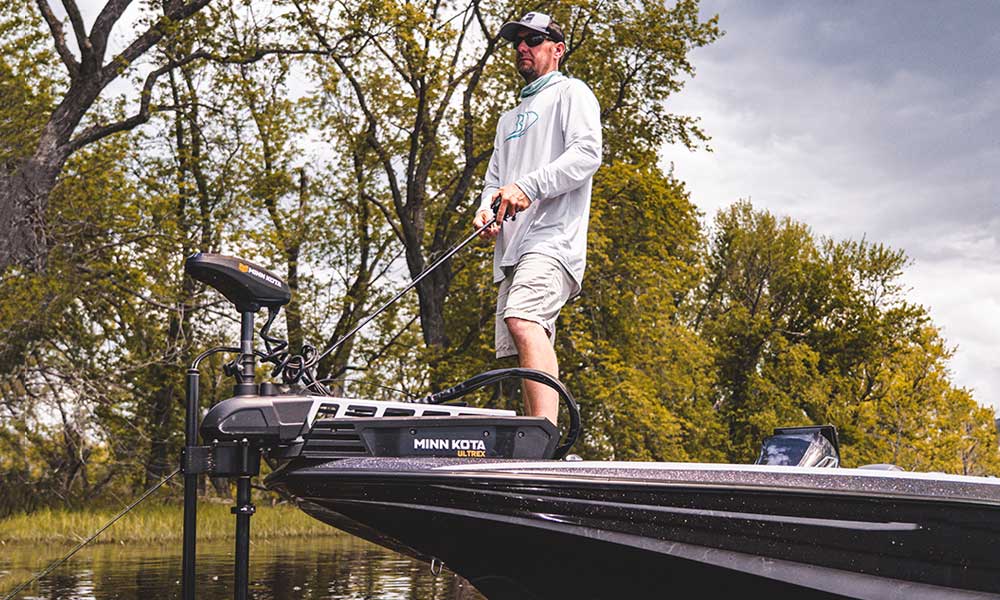
Now that we have a basic understanding of amps and volts, we can better imagine how to utilize the power of multiple 12 volt batteries. Wiring in series sums the voltages of the batteries used while keeping capacity, or the amp-hour rating constant. Conversely, wiring in parallel sums capacity (amp-hours) while maintaining our single-battery voltage.
If we start with two identical 12 Volt, 100 amp hour batteries, we can do some simple math to see where our electrical system ends up:
Series: 12 volts x 2 = 24 volts, 100 amp-hours
Parallel: 100 amp-hours x 2 = 200 amp-hours, 12 volts
When to Wire in a Series vs. Parallel
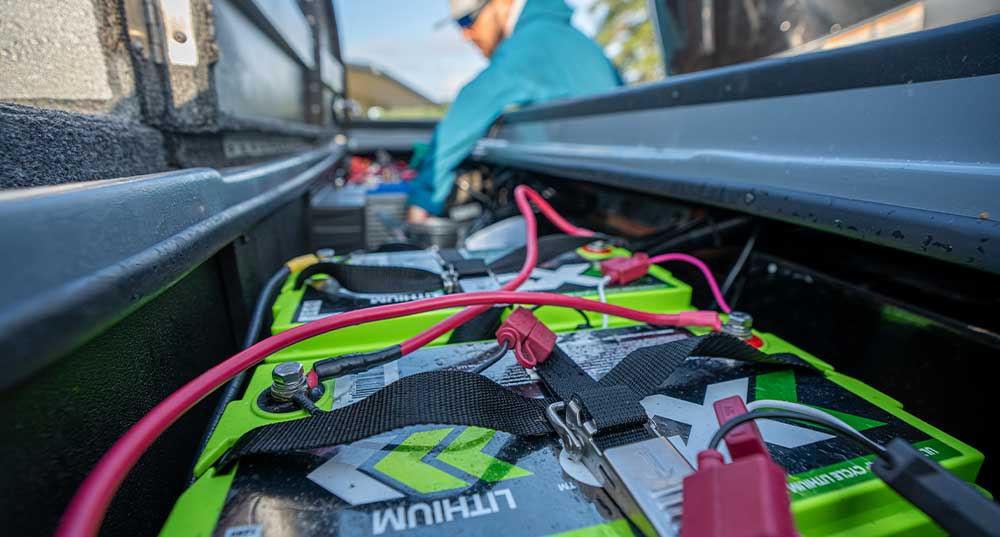
To bring this back to a real-world fishing example, let's imagine two scenarios. In the first scenario, an angler loves their 12 volt trolling motor and it works perfectly for them. They do not need extra thrust or speed, but over the course of the day they find that their battery drain before they're done fishing.
This angler would benefit from adding a 12 volt battery to their boat, wired in parallel so that they can effectively double their run time (amp-hours).
In our second scenario, the same angler finds that even on its highest setting, their 12 volt trolling motor is not powerful enough to hold them in the heavy wind and current.
This angler would benefit from using a 24 volt trolling motor and adding another 12 volt battery, but wiring it in series, ultimately resulting in more power.
Important: Only create a 24 or 36 volt system for trolling motors rated for that voltage.
How to Wire Trolling Motor Batteries in Series
Before wiring your trolling motor batteries in series it's important to note that it is recommended that all batteries included in a series should be the same type (all lead-acid, all AGM or all Lithium), size (volts/amps), and age.
24 Volt Trolling Motor Wiring Diagram (2 batteries)
Following this diagram by wiring two 12 volt batteries in series will result in a 24 volt system.

- Two 12 volt deep cycle batteries are required
- Make sure that the trolling motor is disconnected
- Wire in series only as directed in wiring diagram, to provide 24 volts
- Connect a connector/jumper wire to the positive (+) terminal of battery 1 and to the negative (-) terminal of battery 2
- Connect positive (+) red lead (from trolling motor) to positive (+) terminal on battery 2
- Connect negative (-) black lead (from trolling motor) to negative (-) terminal of battery 1
36 Volt Trolling Motor Wiring Diagram (3 batteries)
Following this diagram by wiring three 12 volt batteries in series will result in a 36 volt system.

- Three 12 volt deep cycle batteries are required
- Make sure that the trolling motor is disconnected
- Wire in series only as directed in wiring diagram, to provide 36 volts
- Connect a connector/jumper wire to the positive (+) terminal of battery 1 and to the negative (-) terminal of battery 2
- Connect a connector/jumper wire to the positive (+) terminal of battery 2 and to the negative (-) terminal of battery 3
- Connect positive (+) red lead (from trolling motor) to positive (+) terminal on battery 3
- Connect negative (-) black lead (from trolling motor) to negative (-) terminal of battery 1
What size connection/jumper wire should you use when connecting trolling motor batteries in series - It's best to use a wire gauge at least one size larger than your trolling motor power leads. For example, if your trolling motor leads are 10AWG, it would be best to use 8AWG or 9AWG wire for your jumper wires.
How to Wire Trolling Motor Batteries in Parallel
Before wiring your marine batteries in parallel it's important to note that it is recommended that all batteries included in parallel should be the same type (all lead-acid, all AGM or all Lithium), size (volts/amps), and age.
12 Volt Parallel Wiring Diagram (2 Batteries)
Following this diagram by wiring two 12 volt batteries in parallel will result in doubling the amp-hours available to your trolling motor or accessory.
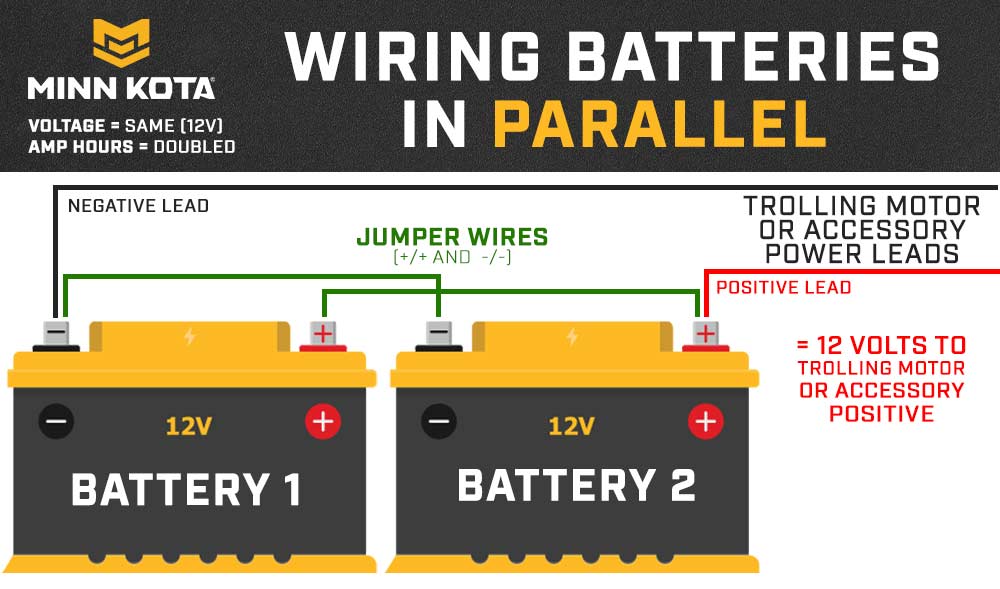
- Two 12 volt deep cycle batteries are required
- Make sure that the trolling motor or accessories are disconnected
- Wire in parallel only as directed in wiring diagram, to provide 12 volt system with increased amp hour capacity.
- Connect a connector cable to the positive (+) terminal of battery 1 and to the positive (+) terminal of battery 2
- Connect a connector cable to the negative (-) terminal of battery 1 and to the negative (-) terminal of battery 2.
- Connect positive (+) red lead (from motor) to positive (+) terminal on battery 2
- Connect negative (-) black lead (from motor) to negative (-) terminal of battery 1
Best Way to Charge Your Trolling Motor Batteries
Now that you've learned everything you need to know to identify your battery system and how to configure it, let's quickly touch on how you can charge them with ease.
Whether wiring in parallel or series, batteries can still be charged individually by a 12-volt, multi-bank charger without disconnecting any leads, making sure to charge and discharge all batteries at the same rate to extend battery life.
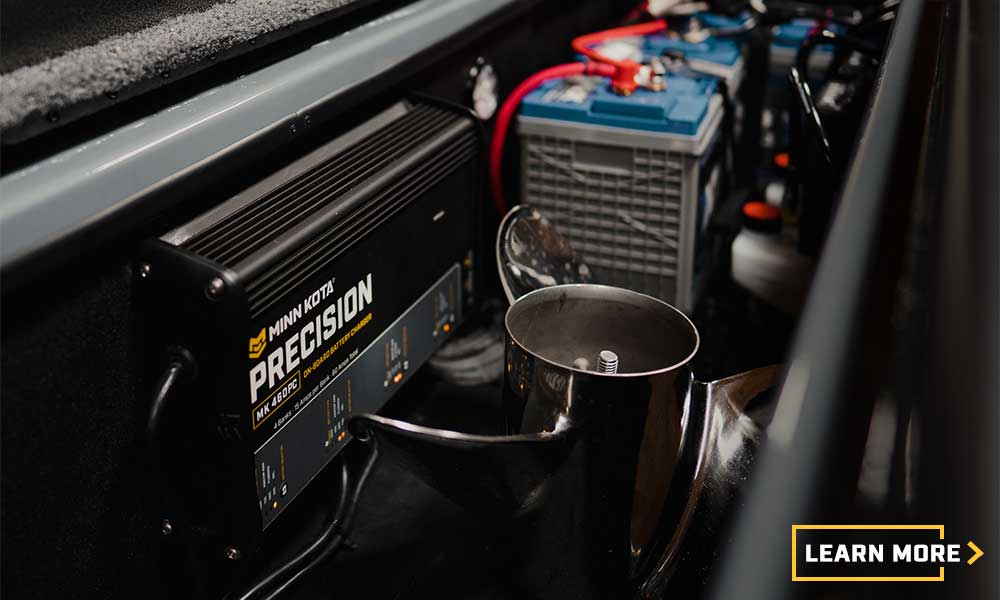
For the most consistent results, a great option is a Minn Kota On-Board Precision Charger which allows charging of up to five batteries simultaneously and up to 15 amps of true-rated output.
Learn more about how an on-board charger creates the simplest and most efficient way to charge your trolling motor batteries.
Key Takeaways for Wiring Trolling Motor Batteries in Series or Parallel
Hopefully this quick guide has helped to remove the mystery around wiring multiple trolling motor batteries in series to create either a 24 or 36 volt system, as well as wiring multiple batteries in parallel.
Important Information & Tips
- Series: Increases voltage, but amp-hours stay the same = More Power
- Parallel: Increases Amp-Hours, but Voltage stays the same = More Run Time
- Important: Only create a 24 or 36 volt system (series) for trolling motors that are rated for that voltage
- Before wiring your trolling motor batteries in series or parallel, it's recommended that all batteries included should be the same type (i.e. all lead-acid, all AGM or all Lithium), size (volts/amps), and age
- Always use the proper fuse protection or marine breaker on your positive lead to your trolling motor or accessory to protect it
- Utilize a Minn Kota On-Board Charger to make charging simple and effective based on your battery type
Other Trolling Motor Battery and Wiring Related Resources
Selecting the Best Trolling Motor Battery [Type & Size]
Lithium Trolling Motor Batteries: Advantages & Compatibility
The Importance of Marine Battery Maintenance










